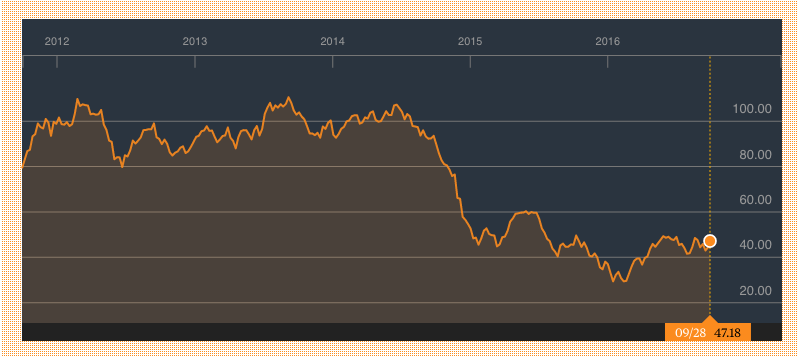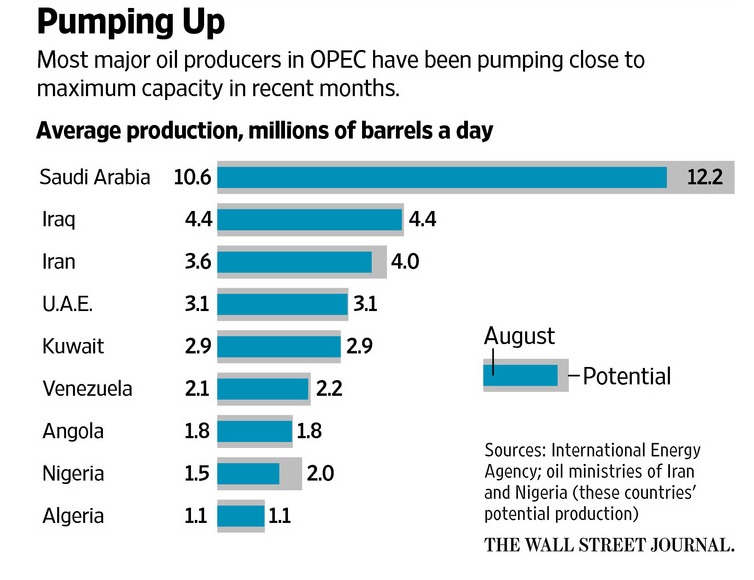Oil prices have taken flight after reports that the Organization of the Petroleum Exporting Countries (OPEC) will reverse course and embrace a crude-oil-production cut.

Until now, OPEC nations, led by Saudi Arabia, have refused to lower production, despite a two-year slump in oil prices.

Saudi Deficit
Saudi Arabia has reconsidered, perhaps because its government finances are a royal mess.
Among the world’s 20 biggest economies, the kingdom has the highest budget deficit, according to data compiled by Bloomberg.
The Wall Street Journal reported that under an agreement that still needs to be ratified, OPEC oil production is expected to be reduced “to a range of 32.5 to 33 million barrels of oil per day from 33.4 million.”

Stock Gushers
Energy shares have performed well this year as oil prices moved up from historic lows in February.
The SPDR S&P Oil & Gas Production ETF (XOP) is up an impressive 24.8% on the year through September 28.

The shares of energy companies in the S&P 500 such as ExxonMobil (XOM) and Chevron (CVX) have also received an adrenaline shot from speculation about a possible OPEC production cut.
Reality Check
All that said, investors should keep a couple of things in mind.
First off, we are a long way from oil prices hovering back in the $100-per-barrel range.
The global economy remains weak and China, the world’s biggest energy consumer, is experiencing a slowdown as it transitions its economy away from heavy manufacturing and exports.
Oil Glut
At the same time, the world remains awash in oil and the industry still suffers from an inventory overhang that will take time to work off.
In August, energy investors received a jolt after the Department of Energy’s (DoE) reported a big upturn in inventories.
As Bespoke Investment Group pointed out in August, the current total inventories of 189 million barrels are 53% above their historical average for this time of year if you look at data going back to 1983.

Wary Goldman
Goldman Sachs (GS) is advising its clients that oil prices aren’t likely to come storming back soon, given the OPEC move wouldn’t have a big impact on the supply outlook.
The investment bank sees WTI at $43 a barrel by the end of December. Next year, it sees oil in the $53 a barrel range.
Takeaway
OPEC is finally bowing to reality: a massive oil glut hangs over the world economy.
Production cuts are a move in the right direction, but it will take time to burn off excess inventories worldwide.
Energy industry healing won’t happen overnight given the relatively weak global economy, in my opinion.
Photo Credit: Maher Najm via Flickr Creative Commons




